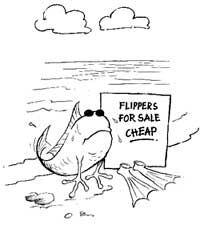Landward bound
 INVASIONS OF THE LAND
INVASIONS OF THE LAND
Malcom S Gordon and Everett S Olson
University Press, New York, 1995
that organic evolution on earth began first in the sea is certain, but the manner in which land was colonised by biota has largely remained in the realm of conjecture. The two earlier books on this subject were Colin Little's The Colonization of Land (1983) and Terrestrial Invasion (1990). The book under review discusses the problem of transition of biota from sea to land by taking advantage of the micro-palaeontological and molecular approaches. There-fore, it represents a synthesis between palaeobiology and neobiology. The authors also take into account the geological, palaeo-climato logical, palaeo-ecological and palaeoontological approaches.
The transition of biota from sea to land has been a major step in the history of evolutionary biology. Once it was achieved, the earth provided a vast habitat for colonisation by and the evolution of newer land-based micro-organisms, plants and animals.
The transition among plants involved desiccation due to the deficiency of water and nutrients on land, the transport of water, stomatal functioning, change in the length of the day and the products of photosynthesis, and a new reproductive biology. The direct result of this was the evolution of a vascular system in plants for water conduction and mechanical support, stomatal regulation for gas exchange and growth, and reproduction on land.
Animals managed the transition by using water and air as respiratory media, thermal exchange and adequate body hydration. Other factors that assisted the shift from sea to land were the abundance of inorganic solute on land, the production and disposal of metabolic wastes, different life history patterns and sensory modalities. The waste produced by one species became food for the other so that natural systems were left with almost no waste.
Perhaps the first organisms to
